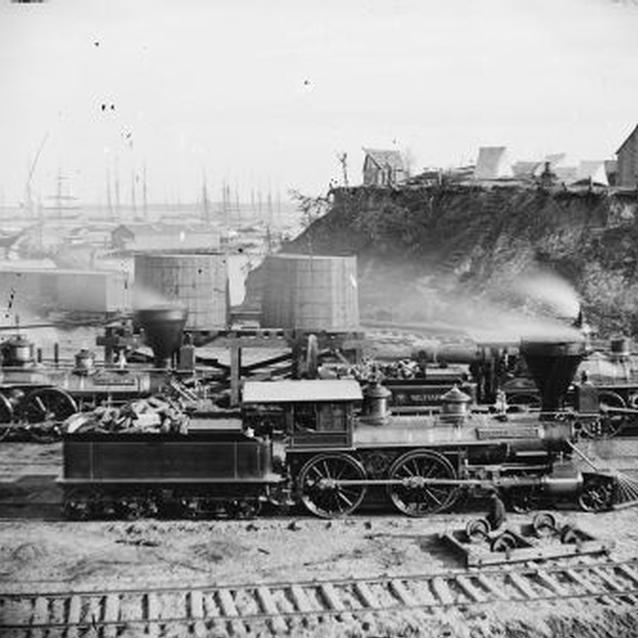The work of the United States Military Railroad Construction Corps (U.S.M.R.R.C.C.) was instrumental in the reduction and ultimate defeat of the Confederate army defending Petersburg and Richmond, Virginia in the closing days of the American Civil War.
In the nine months of the Siege of Petersburg, 21 miles of track would be laid, 25 locomotives and more than 275 pieces of rolling stock would be used, and 2,300,000 miles would be logged on the railroad.

Library of Congress
From the waterfront at City Point just below Richmond on the James River, Gen. Ulysses S. Grant had to supply an army of more than 100,000 troops and more than 65,000 horses and mules. For so vast an army, living off the land was not an option. All food, equipment and supplies had to be shipped in from northern ports and then delivered to the battlefront eight miles from away.
Eight wharves were built to accommodate hundreds of vessels conveying war material. More than 280 buildings were constructed by the U.S.M.R.C.C. at City Point by the end of the siege. The lumber was pre-cut as per orders and then assembled once it arrived. The sleepy little village took on the appearance of a thriving, bustling port in just a few days.
As the siege progressed, Grant extended his lines around Petersburg and the United States Military Railroad (U.S.M.R.R.) followed. After every major action, with few exceptions, the railroaders received orders to investigate the terrain and chose a site suitable for a temporary rail line. In the nine months of the siege, 21 miles of track would be laid, 25 locomotives and more than 275 pieces of rolling stock would be used, and 2,300,000 miles would be logged on the railroad. The line was used to transfer thousands of troops, but the primary cargo was food, weapons, and ammunition. Wounded soldiers were eventually transported by rail to the Depot Field Hospital at City Point.
Stations were established along the railroad for distribution of supplies. Sidings were built at these stations so trains unloading would not interfere with other trains on the line. On average 18 trains made the trip from City Point to the front and back again each day and timetables were published to ensure a smooth operation.
The ultimate Union victory over the Confederate army of Robert E. Lee at Petersburg is due in large part to the well-organized operations of the U.S.M.R.C.C.
Last updated: August 15, 2017
